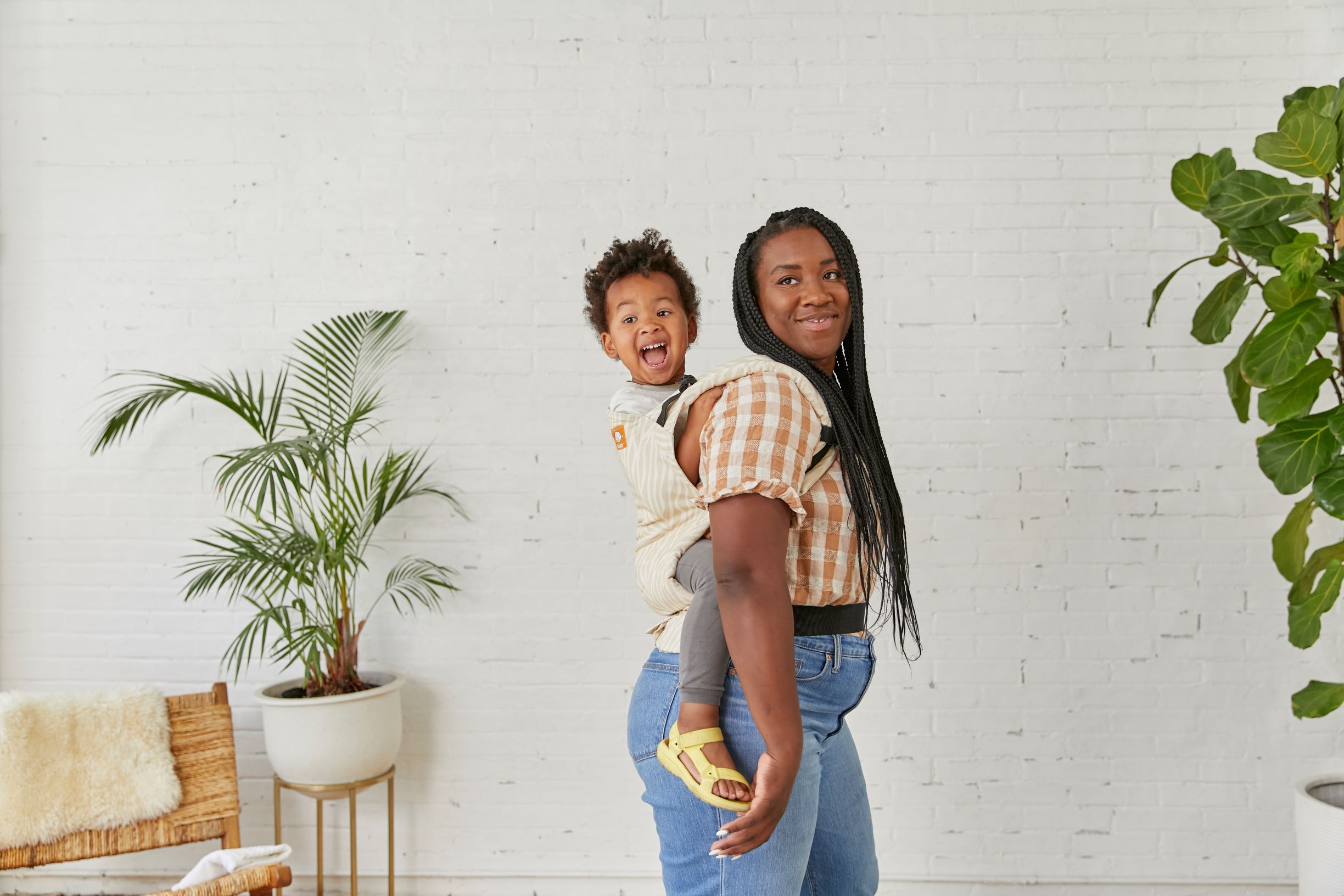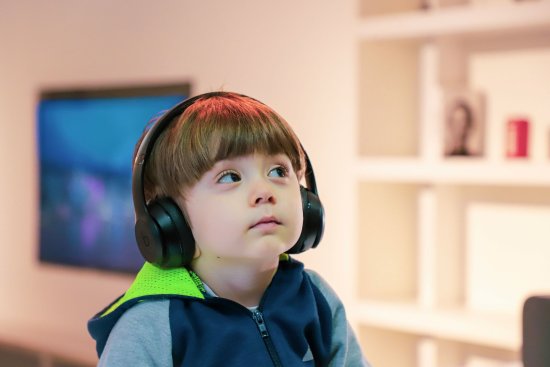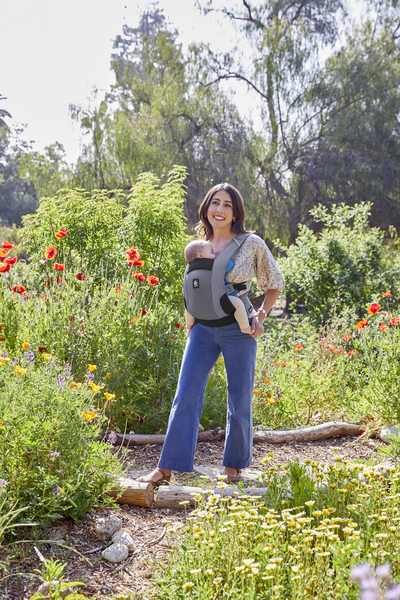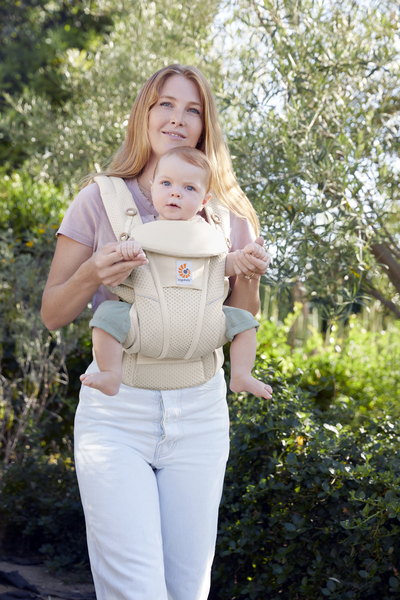
Autism Spectrum Disorder (ASD) encompasses a range of conditions characterized by challenges with social skills, repetitive behaviors, speech, and nonverbal communication. Amidst these challenges, sensory processing differences are a hallmark feature, affecting how individuals with autism perceive and interact with their environment. In this context, baby carriers are such a valuable tool for parents and caregivers. This blog explores the benefits of using baby carriers for children with autism, emphasizing sensory regulation, security, and the facilitation of exploration and bonding.
Understanding Autism and Sensory Needs
ASD is a developmental condition that manifests in early childhood and continues throughout a person’s life. However, through various means of support, children and adults with ASD are still able to thrive! One of the defining features of autism is atypical sensory processing. This can mean that a child with autism might be hyper-sensitive (over-responsive) to sensory inputs like sound, light, or touch, or hypo-sensitive (under-responsive), seeking out more intense sensory experiences. These sensory processing differences are not just peripheral issues but central to the autistic experience, deeply affecting behavior, learning, and daily functioning.
The Sensory World of Autism
– Hyper-Sensitivity: For some children with autism, the world can feel overwhelmingly intense. Common noises may be perceived as painfully loud, gentle touches as uncomfortable, and ordinary lights as blindingly bright. This hypersensitivity can lead to sensory overload, causing stress, anxiety, and sometimes meltdowns, where the child may experience an intense reaction to feeling overwhelmed.
– Hypo-Sensitivity: Conversely, some children might seek out sensory stimulation. They might not react to pain in typical ways, may have a deep need for tactile sensations like pressure or texture, or may engage in behaviors like spinning or rocking to satisfy their sensory needs.

Sensory Processing and Behavior
The relationship between sensory processing differences and behavior in children with autism is significant. A child’s seemingly inexplicable behaviors often make perfect sense when viewed through the lens of sensory processing needs. For example, a child covering their ears in a seemingly quiet room might be reacting to a noise that is barely perceptible to others but overwhelming to them. Understanding these needs is so important to support the child as they grow.
Creating Sensory-Friendly Environments
Supporting children with autism often involves creating environments that accommodate their sensory processing needs. This can include:
– Reducing Overwhelming Stimuli: Creating calm, predictable spaces where a child can retreat from sensory overload is essential. This might mean dimming lights, reducing background noise, or having areas where the child can be enclosed and feel secure.
– Providing Sensory Experiences: For those who seek more sensory input, providing safe opportunities to explore textures, movements, and other sensations can be beneficial. Sensory toys, swings, and even baby carriers that offer a snug, pressure-like sensation can be comforting.
The Role of Baby Carriers in Sensory Regulation
Baby carriers can play a unique role in sensory regulation for children with autism. By offering a consistent, pressure-like embrace, carriers can mimic the comforting sensation of being held. This can be particularly soothing for children who are hypersensitive, providing a sense of security and stability in a world that can often feel chaotic and overwhelming. For children who are hyposensitive, the close contact with a caregiver can provide the sensory input they crave in a controlled, comforting manner.
“My son is 5 and was diagnosed with ASD just before his 3rd birthday. He can get very overwhelmed when there are a lot of people around and he prefers to be held close when he’s feeling uneasy, so babywearing seemed like the perfect option for us both. Wearing him brings him comfort so he can still experience the world at his own pace and it gives me the opportunity to still participate in our family adventures without stress.” – Kari E.
 Benefits of Baby Carriers for Children with Autism
Benefits of Baby Carriers for Children with Autism
– Enhanced Sense of Security and Comfort: The close physical contact provided by baby carriers can impart a sense of security to children with autism, helping reduce feelings of anxiety or distress.
– Regulation of Sensory Input: Baby carriers can offer a controlled sensory environment, reducing exposure to overwhelming stimuli and helping to prevent sensory overload.
– Promotion of Bonding and Attachment: The physical closeness facilitated by baby carriers encourages bonding between the child and the caregiver, supporting emotional development.
– Facilitation of Movement and Exploration: Baby carriers allow children with autism to explore their surroundings from a safe vantage point, supporting cognitive and sensory development.
– Reduction of Anxiety in New or Overwhelming Environments: By providing a familiar and comforting environment, baby carriers can help reduce anxiety in unfamiliar settings.
Learn more about all the benefits of babywearing.
In our Western culture, it’s common for parents to stop babywearing when their kids can walk. Many carriers aren’t designed to support bigger kids, but the benefits of babywearing continue well into the toddler years. All the benefits listed above remain AND you can also add in your own peace of mind when you’re out and about knowing that your busy kid is safe in your arms. For kids with ASD, this can be especially comforting for both parent and child.
Many Ergobaby carriers support your baby up until about 45 lbs. Our sister brand, Baby Tula, support your journey beyond that with Toddler and Preschool carriers designed for kids up to 65 and 75 lbs.
Practical Tips for Using Baby Carriers with Children on the Autism Spectrum
When using baby carriers with children who have autism (or any child in general), it is essential to ensure proper fit and comfort. With the purchase of any Ergobaby carrier you get a free babywearing consultation where you can meet with one of our babywearing experts who will walk you through all the tips and tricks to safely and comfortable wear your baby.
Another tip is to gradually introduce the carrier. Maybe you start off with a few minutes around the house and eventually build up to walks around the neighborhood.
Throughout your babywearing journey, you’ll want to monitor for signs of overstimulation.
- Look for Cues: Learn to recognize your child’s unique signs of overstimulation or discomfort. This might include vocal expressions, body movements, or changes in mood.
- Immediate Response: If signs of distress are observed, promptly remove your child from the carrier and address their needs. Comfort them in their preferred way until they feel better.
Sensory-Friendly Modifications
- Customize for Comfort: Consider modifying the carrier with sensory-friendly materials or additions. For example, soft, tactile covers for straps or patches of different textures can provide sensory input in a controlled manner.
- Incorporate Preferred Sensory Items: If your child has a favorite sensory toy or object, see if it can be safely attached to the carrier for comfort during outings.
Sensory-Friendly Activities with Baby Carriers
Incorporating baby carriers into daily routines and activities can be a wonderful way to engage children on the autism spectrum in sensory-friendly experiences. These activities can promote exploration, comfort, and learning, all while maintaining the reassuring closeness between the child and caregiver. Here are some sensory-friendly activities tailored for children with autism that can be enhanced through the use of baby carriers:
Gentle Movement Activities
– Rhythmic Walking or Swaying: Gentle, predictable movements can be very soothing for children with autism. Walking in a smooth, rhythmic manner or gently swaying can help regulate their sensory system and induce calm.
– Dance to Soft Music: Dancing with your child in the carrier, especially to soft, calming music, can provide a delightful sensory experience. The movement combined with auditory input helps in sensory integration.
Sensory Friendly Outdoor Activities
– Nature Walks: The natural environment is full of gentle sensory experiences. The sights, sounds, and smells of nature can be engaging without being overwhelming. Nature walks allow children to experience these sensory inputs at a safe distance.
– Visits to Sensory Parks or Gardens: Many communities offer sensory-friendly parks or gardens designed with features that engage the senses in a gentle way, such as textured paths, gentle water features, and aromatic plants. Exploring these environments while securely in a carrier can make the experience more manageable and enjoyable.
– Beach or Lakeside Strolls: The sound of water and the feeling of a light breeze can be very calming for sensory-sensitive children. A walk along a beach or lakeside, with the child in a carrier, offers a serene sensory experience.
 Sensory Exploration through Touch, Sight, and Sound
Sensory Exploration through Touch, Sight, and Sound
– Touch-and-Feel Books: While in the carrier, share touch-and-feel books with your child. This activity combines the comfort of being close to a caregiver with the tactile exploration of different textures.
– Nature Treasure Baskets: Collect natural items like smooth stones, pinecones, and feathers in a basket for your child to explore while you carry them. This activity offers a variety of textures for tactile exploration.
– Observing Nature: Bird watching or looking at clouds can be a soothing visual activity. Discussing what you see introduces new vocabulary and concepts in a relaxed setting.
Incorporating Calming Techniques
– Rhythmic Breathing: Engage in deep, rhythmic breathing while carrying your child. This not only helps you relax but also provides a model for your child to mimic, aiding in their own relaxation.
– Gentle Music or Nature Sounds: Playing soft music or nature sounds during carrier time can provide a calming auditory backdrop, which can be especially soothing for children with auditory sensitivities.
– Aromatherapy: If your child responds well to certain scents, consider using a diffuser at home during carrier time. Scents like lavender can be calming and help in creating a soothing sensory environment.
When engaging in sensory-friendly activities with a baby carrier, remain attuned to your child’s responses and comfort levels. Activities should be introduced gradually, and any signs of sensory discomfort or overload should be addressed promptly. With thoughtful selection and pacing, baby carriers can significantly enhance the sensory experiences of children with autism, fostering a sense of security, exploration, and joy in their interactions with the world around them.
Baby carriers offer numerous benefits for children with autism, supporting their sensory needs, emotional development, and exploration of the world. They represent a valuable tool for parents and caregivers, fostering a deeper connection with their child while navigating the challenges and triumphs of autism together. Together, along with the support of community, you and your little ones will find your rhythm together and create a lifelong bond where everyone feels supported.

 Benefits of Baby Carriers for Children with Autism
Benefits of Baby Carriers for Children with Autism

